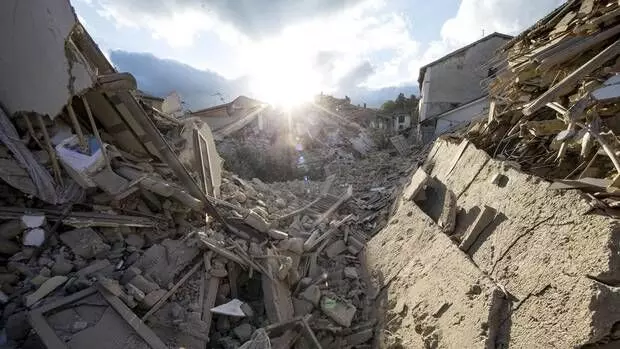Left in ruins

The lethally devastating earthquake that rattled Morocco on Friday is yet another gloomy chapter in the realm of extreme natural disasters. Most of the damage has been concentrated in the historic city of Marrakesh — which is just 71 kilometres from the epicentre in the High Atlas Mountains. The topography of the region played a cruel role in the disaster's outreach. With the 6.8 magnitude quake, followed by a 4.9 magnitude aftershock, being shallow, and the rocky terrain providing a conducive landscape for wave propagation, the tremors were felt as far as the capital city Rabat, some 350 km away from the epicentre, as well as Casablanca and Essaouira. As the dust settles and the affected areas are assessed, grimmer facts may emerge. The death toll, currently estimated at over 2,000, is likely a conservative figure, as many bodies may still be buried beneath the rubble or inaccessible due to the rugged terrain. Furthermore, the mortality and destruction in the mountainous villages around the epicentre are not yet factored in due to geographical constraints. Alongside the casualties, countless others are grappling with injuries, both physical and emotional. The devastation extends to Morocco's rich historical heritage. Some of the city's most iconic landmarks, including the famous 12th-century Koutoubia Mosque and parts of the UNESCO heritage Medina, have suffered significant damage. The scars on the city's soul are profound, and the road to recovery will be long and arduous. In the wake of this natural catastrophe, the relationship between humanity and nature has once again come to intrigue us. These tragedies, though completely unavoidable, serve as stark reminders of the precarious balance we maintain with our environment. The fragility of our existence becomes apparent, urging us to reconsider how we plan and develop our settlements in regions prone to seismic activity. This sombre Moroccan episode also evokes the painful memory of the magnitude 7.8 earthquake that struck Turkey and Syria earlier this year, claiming the lives of more than 21,600 people. It stands as a testament to the universal vulnerability we share, regardless of our geographical location. Earthquakes have long been a scourge for humanity, claiming lives in the hundreds of thousands in some cases. These disasters, while beyond our control, expose the critical importance of careful and meticulous urban planning. The consequences of poor preparation can be dire, amplifying the suffering of those affected. In these trying times, the global community must unite in support of Morocco. It is heartening to see nations from across the world extending their hands in solidarity. The Indian prime minister, speaking from the dais of G20 Summit, said that "We pray that all injured recover at the earliest. India is ready to offer all possible assistance to Morocco in this difficult time." Many nations — from the United States to Turkey and from Russia to Ukraine, among others — have also extended their solidarity and support. Algeria's gesture, in particular, is a poignant symbol of how adversity can foster unity. Despite diplomatic tensions and severed ties between the two nations, Algeria has chosen humanity over politics. Overriding the suspension of direct flights in both directions, they have opened their airspace to facilitate humanitarian and medical flights to Morocco, a gesture that transcends boundaries and politics. Adversity, as history has shown us time and again, has a unique way of uniting humanity. It serves as a litmus test of our compassion and solidarity, reminding us that, in the face of tragedy, we are all one. As Morocco navigates through the harrowing darkness left in the wake of this earthquake, let us collectively bear the torch of hope. Let us offer our prayers for the souls lost, and let us work hand in hand to aid those in need. In the face of nature's fury, humanity is our greatest strength. It is through unity and support that nations can help Morocco rise from the ruins and rebuild its future.



